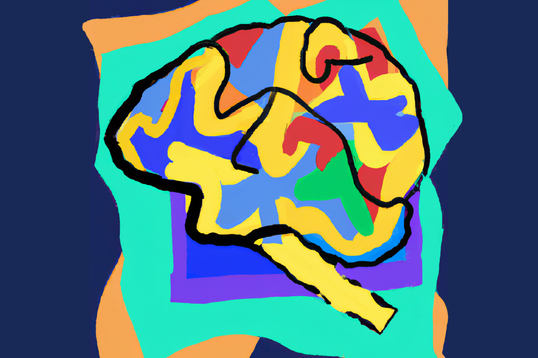
3 tips for becoming more creative
Creativity isn’t a gift that some lucky people were born with and it’s not about being “right brain” dominant. Creativity is an ability to generate something new. It happens by bringing together input from different parts of the brain (including both right and left hemisphere) and integrating disparate ideas into a new thought, idea or approach.
Creativity is a skill that can be useful far beyond painting, playing music and writing screenplay. We need creativity every day in our work, as we look for solutions to new (or old) problems and challenges.
Neuroscientist Dr Tara Swart writes about the brain and creativity in this insightful Fast Company article. She also reveals where the commonly misused distinction of “right brain” and “left brain” comes from and why it’s incorrect. Creativity isn’t the result of one hemisphere or the other. To be creative, we need to be able to combine input from both hemispheres of the brain.
Neuroscience studies have shown that highly creative people generate more “novel connections” across distant parts of their brain. A classic example is when an engineer noticed how burrs stuck to his clothes and his dog while out hiking. His brain made a leap to creating a new clothing fastener, leading to the invention of Velcro.
One study associates these kinds of new connections with “thinking outside the box”. The study also describes these kinds of connections “inefficient”, implying it takes time to allow them to happen.
The keys to thinking outside the box
To allow novel connections across the brain, we need to give the brain a chance; it needs a bit of a leisurely pace. To get there, we will need to tame our busy, conscious mind that is so often furiously trying to actively think, multi-task and solve problems. In our busy day-to-day world, we rarely give ourselves the space, time and headspace to allow our minds to wander and make these new kinds of connections.
Dr Swart cites research that shows that highly original thinkers use three mechanisms for creative thought. They may seem paradoxical at first because they involve both broadening the mind and narrowing the focus, but let’s have a look:
- Let your mind wander. Stop thinking. Slow down and stare at the clouds or close your eyes for a bit. Let your mind meander, without editing. This allows different nodes of the brain to reach out and potentially connect up – connecting disparate bits of knowledge, experiences and concepts. These connections may merge into something bizarre and unusable but this might just create a new, brilliant idea, that you couldn’t have dreamed up previously. You can support this process by being fascinated by these connections rather than judging them as good or bad.
- Reduce distraction when trying to focus. Clean up your mind and your workspace. When trying to focus on one problem or the area you want to be creative about, remove other problems or projects that could distract you. Remove devices that ping and those piles of paper that represent your on-going to-do list.
- Practise selective attention. This is about focusing your attention and staying focused on one problem. While cleaning up the clutter on your desk might be useful, you still need to be able to hold your attention on the problem at hand. Train your brain to focus on what you want – without defaulting to “multi-tasking”. This is supported by mindfulness activities like meditation, tai chi, and yoga.
All of these approaches can be turned into habits and the more you practise them, the more accustomed your brain will be to creating new ideas.